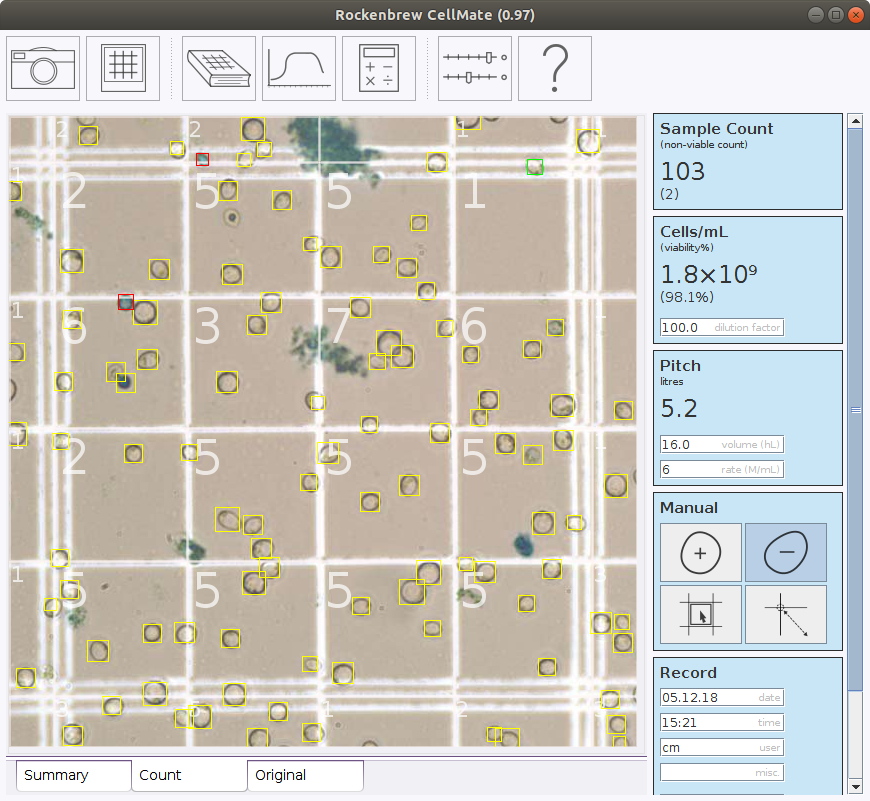Does it really work?
Well, judge for yourself. I reckon it's pretty good and comparable to several costly alternatives.
Each example includes three images:
- The raw images directly from the microscope
- the automated analysis
- and finally, the user amended count, where I've added or removed cells, as I see fit, for a final count
As well as being a work in progress, there are parameters which can be specified to improve the analysis of a specific image type. The image type is driven
by the hardware - microscope, camera and given focus. I believe these examples are broadly representative of accuracy & precision, but more samples are necessary.
Moreover, improvements are possible.
Example 1 - not a lot of yeast
You'd want to count 100+ cells to have a statistically significant count. You could take one or two more images from this dilution.
1 / 3

Raw Image
2 / 3

Automated Analysis
3 / 3

User Amended Image
❮
❯
| auto. count |
added |
removed |
final |
net chg. |
error rate |
| 49 |
4 |
0 |
53 |
+4 |
7.5% |
Hardware: Hobby microscope + 0.3MP camera
Sample: Baking yeast (Saccharomyces Cerevisiae)
Notice that this camera only focuses correctly in the centre/centre-right of the image. You get what you pay for. That said, it still works for the most part.
Example 2 - a lot of yeast
1 / 3

Raw Image
2 / 3

Automated Analysis
3 / 3

User Amended Image
❮
❯
| auto. count |
added |
removed |
final |
net chg. |
error rate |
| 220 |
18 |
11 |
227 |
+7 |
3.08% |
Hardware: Hobby microscope + 0.3MP camera
Sample: Baking yeast (Saccharomyces Cerevisiae)
We can nitpick about which blobs are cells and which are just blobs, but roughly, we've got 2.7 billion cells/mL. For a desired pitch rate of 6 million cells/mL into 16hL
(1600L or 10 Brewer's Barrels (BB)) of wort, we should pitch about 3.5L of the original slurry.
Example 3 - something borrowed
This image isn't mine. I've borrowed it from the White Labs' lab, so the very opposite end of the scale
from my child's hobby microscope.
1 / 3

Raw Image
2 / 3

Automated Analysis
3 / 3

User Amended Image
❮
❯
| auto. count |
added |
removed |
final |
net chg. |
error rate |
| 105 |
3 |
5 |
103 |
-2 |
-1.94% |
Hardware: Unknown - but really, really good.
Sample: Unknown brewers yeast
The extraneous (hop/protein/dead cell) matter is the obvious issue here. It creates an over-count, but this is easily removed manually. I'll look into potential auto-count improvements here.
Note the mother and budding daughter cell, (left hand side). At this budding stage, the daughter is too busy to reduce the dye, so appears non-viable, but she'd be fine, (if not for the toxic dye).








